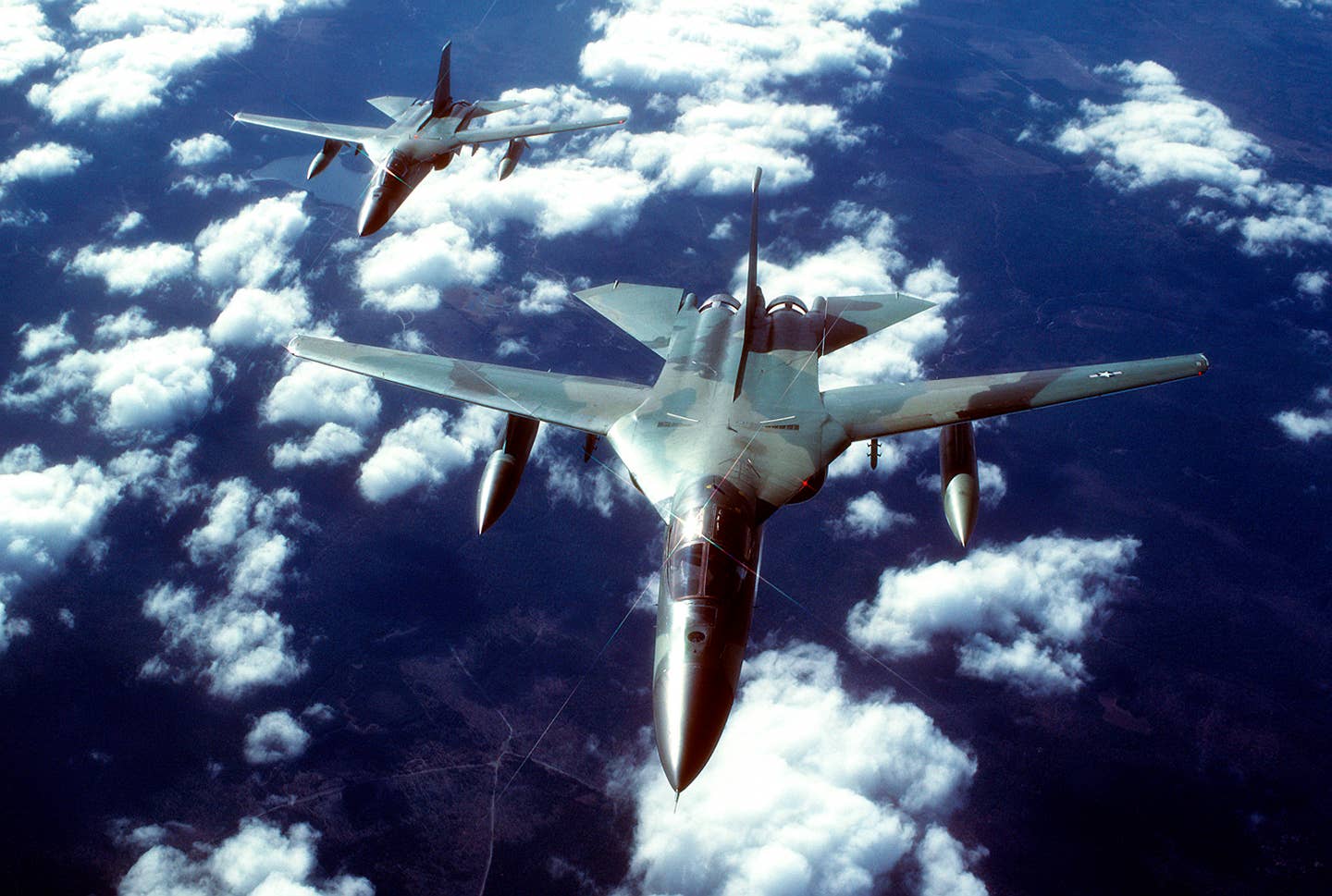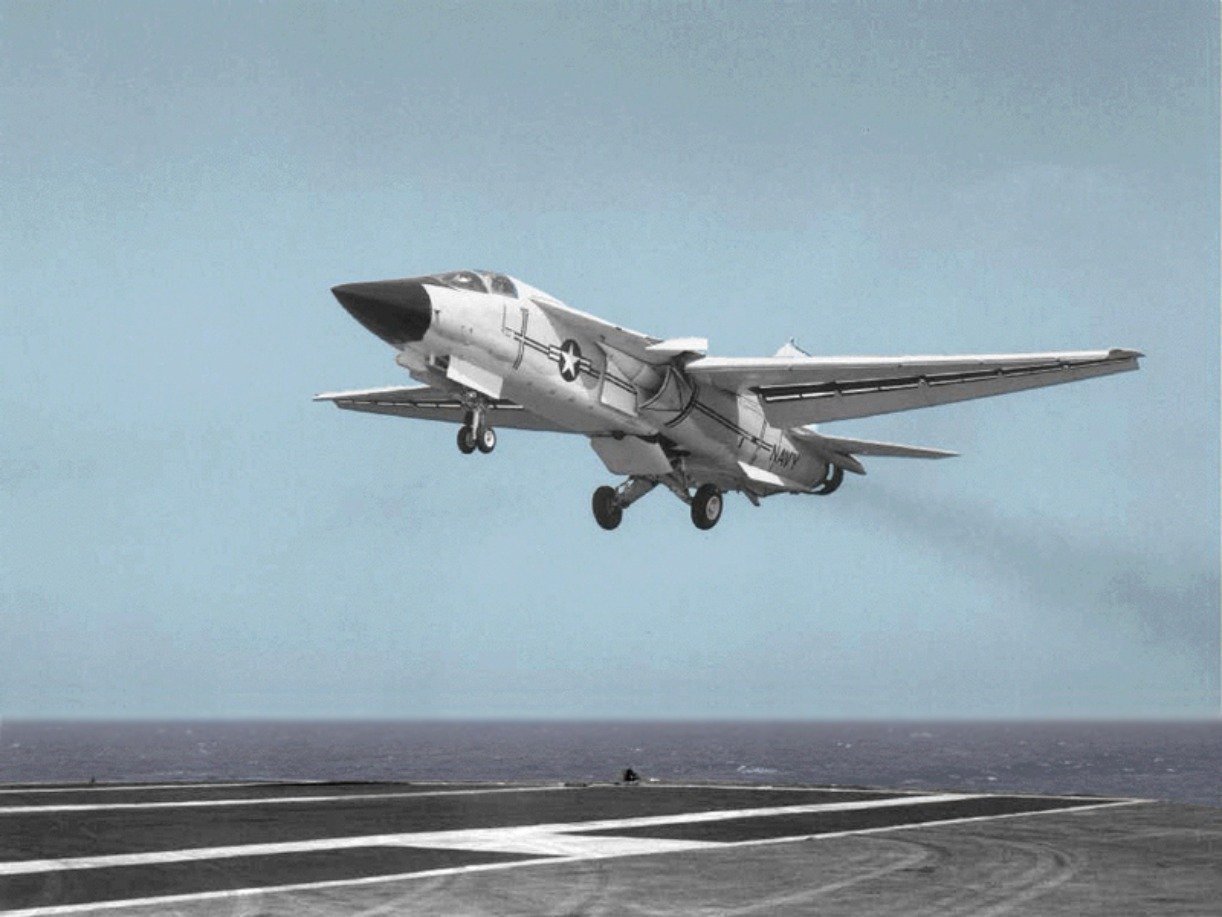Everyone sings the praises of the A-10 Thunderbolt II, and rightly so. There’s something that’s eternally cool about a military attack jet that’s built more around its cannon than its wings or engine. But we need to stop pretending they’re invincible superplanes that bounce off tank shells like they’re made of silicone.
Plenty of people have done an exemplary job explaining why the A-10 isn’t nearly as good as you think it is. Go check out LazerPig’s two-part series on YouTube about the A-10 if you want to learn more. But for right now, we’d like to direct your attention elsewhere. To a legacy swing-wing American attack jet that everyone passes off as a big, bloated waste of time. Oh, how wrong these people are. This is the story of the F-111 Aardvark.
It’s easy to get the wrong idea about the General Dynamics F-111. Even the U.S. Military seemed to act like the cold, dismissive father every fiction writer keeps projecting their past traumas onto. Fun fact, it didn’t receive its official “Aardvark” designation until the day the U.S. Air Force retired them back in 1996. One can only assume a whole lot of politics played a role in why this gem of a plane was overlooked like Tom Brady before the 2000 NFL draft.
It doesn’t help the Aardvark’s case that it strikingly resembles the immortal F-14 Tomcat with the aspect ratio all messed up. But there’s a case to be made that if either of the two aircraft didn’t make it to production, the other probably wouldn’t have either. The Aardvark’s most primordial origins date back to a time of profound change in America’s military-industrial complex. Changes brought upon by the ascension to power of one man in particular.
If he served in office today, Robert McNamara would have been the poster child of meme culture the same way Mitch McConnell or Joe Biden currently are. A slender but tall man with an iconic middle parting right the way down his scalp, McNamara was as pedantic as he was effective at getting what he wanted. Whether as a high-ranking executive at the Ford Motor Company or as the longest-serving U.S. Secretary of State, McNamara used every ounce of clout he gained at UC Berkeley and the Harvard Business School to great effect.
It was McNamara who was instrumental in formulating the requirements for a novel kind of military strike aircraft for both the U.S. Air Force and Navy. For some context, the Air Force and Navy top brass of the day were known for having frequent catfights with each other when it came to the Pentagon funding their respective research programs. But in June 1961, McNamara grabbed the proverbial two children by their ears and told them to shut up and be happy with the new Tactical Fighter Experimental (TFX) they were both about to share.
Say what you will about McNamara dropping the ball on Vietnam. But it takes some serious cajones to rear the two most powerful fighting forces in the world like a couple of petulant toddlers. With submissions from heavyweights like Boeing, Republic, North American, McDonnell, and General Dynamics, there was some serious cash money to be won if one of these aerospace firms submitted the right proposal to the cabinet of the Kennedy administration.
In the end, both Boeing and General Dynamics were selected for the final round of testing to see who’d win papa McNamara’s affection. Boeing’s design, dubbed the 818, garnered considerably more favor with the Pentagon at first. Though neither design was exactly perfect, both concepts for variable-geometry wings would have been the first to fly, depending on who won the competition.
By April 1962, the Air Force and Navy had reached a verdict on what they thought of the TFX initiative. In short, the Air Force was willing to settle for the Boeing 818, but the Navy appeared ready to throw both proposals in the landfill. This greatly displeased big daddy McNamara. Of his own accord, Robert McNamara went against the Air Force’s wishes and selected General Dynamics’ proposal over Boeing’s.
Ostensibly, this was done because the General Dynamics proposal shared more in common between the land-based and carrier-based variants. If we had to guess, this royally ticked off both the Air Force and the Navy, who now had to field an aircraft neither of them really wanted to begin with. Could this have led to a generation of resentment towards the F-111? It would certainly seem so.
It’s not like the Navy variant, the F-111B, spent more than a couple of nanoseconds on board U.S. Navy carrier decks in relative terms. Even with help from Grumman, the eventual manufacturers of the F-14, the F-111B was a bloated brick of a machine compared to other Navy fighters. The design didn’t even make it out of the 1960s, if that’s any significant context.
But the Air Force’s F-111s are an entirely different story. In a similar way to how the A-10 was built around its 30mm cannon, the F-111 was largely built around accommodating a vast suite of ordnance. In total, the F-111 sported nine undercarriage pylons onto which dozens of combinations of missiles, bombs, or rockets could be mounted. For starters, the F-111 was one of the first test beds for the remarkable Hughes AIM-54 Phoenix BVR air-to-air missile.
For those who don’t know, the Phoenix would go on to trick Iraqi Air Force Pilots into thinking that their fighters were spontaneously exploding in mid-air. All owing to their radars not picking up AIM-54s fired from Iranian F-14s sniping them from well beyond the horizon. Granted, most of the testing for the Phoenix was performed with the Navy F-111B rather than the F-111A. But don’t think the Air Force variant didn’t pack a punch.
It’s been said that if there ever came a day when nukes had to be fired upon an American adversary, and ballistic missiles weren’t available or viable, the F-111A would have more likely than not taken on the job. Why’s that? Well, lots of U.S. jets put an emphasis on speed in the third generation of jet fighters. But few could fly quite as fast as what the F-111A’s two Pratt & Whitney TF30 turbojets allowed it to achieve.
A combined 50,200 lbs of thrust at full afterburner propelled an 82,800 lb (37,557 kg) meatball of an airframe well north of twice the speed of sound. When a thermonuclear device has just been fired, and the pilots need to egress away as if their lives depended on it, that’s the only kind of machine acceptable to do that job. Even modern F-15E Strike Eagles struggle to make it out in one piece during modern nuclear attack simulations.
As such, the F-111 was one of only a handful of jets to ever be test-fitted with the AGM-69 SRAM thermonuclear missile. But if you’re not waging war to end all wars against the Russians or Soviets, the F-111 can also carry more conventional unguided bombs ranging from 500 lbs to 2,000 lbs than most Second World War heavy bombers. That’s apart from the B-29, of course. Coincidentally, Robert McNamara worked closely with B-29s during his career in the Army Air Force during World War II.
Combine this force with that of cluster bombs, laser-guided bombs, bunker busters, optically guided glide bombs, and runway cratering bombs, and there are very few airframes ever made that were built with this supreme level of ground attack ability. If all else failed, the F-111 could be fitted with an M60 20mm rotary cannon. Though not used very often, it warms our hearts that the Aardvark could carry one.
Through the F-111C variant, the Aardvark served with the Royal Australian Air Force until 2010, 14 years after the U.S. Air Force retired and mothballed the type in 1996. Only then was the type given its surname, as if as an afterthought. That’s despite the type serving in every conflict from Vietnam to Desert Storm. Something tells us that it happened for a reason. Never mind that the F-111 doesn’t have the same reputation for accidentally shooting friendlies in the days before the A-10 had a dedicated targeting computer. Some things are easy to look over when you have a gun the size of a small car.
Keep in mind the F-111 had one of the most successful ground attack campaigns in the Gulf War campaign. That includes the A-10 for you Warthog fanboys out there. Were old grudges from the early 60s back to haunt the recent past? Very possibly, if you ask us. But if you want our two cents, it’s that if there were ever a legacy jet fighter airframe to consider bringing back into service, it’s not the Iranian-compromised F-14 Tomcat. It’s the Aardvark, goofy name and all.





















